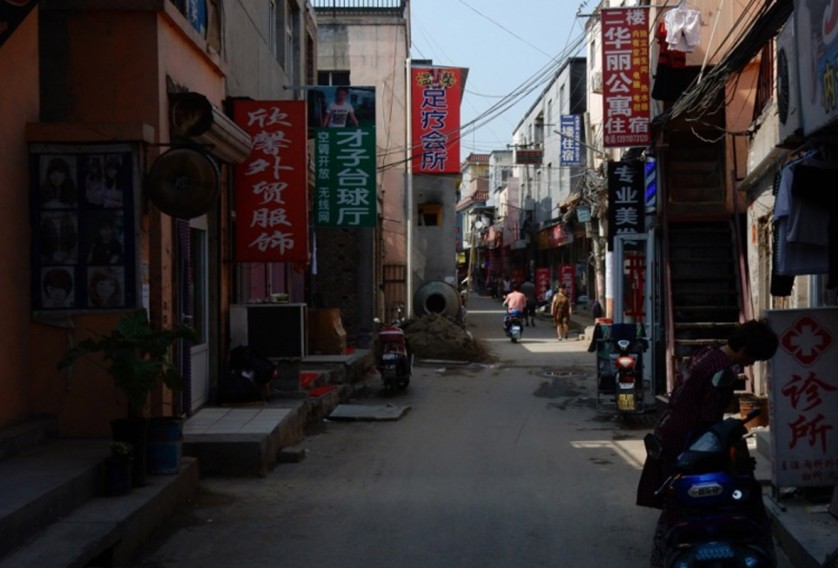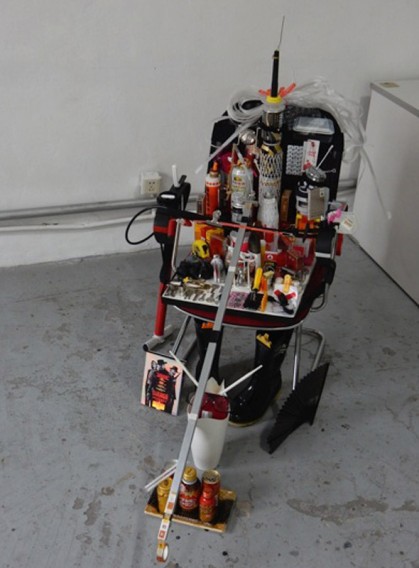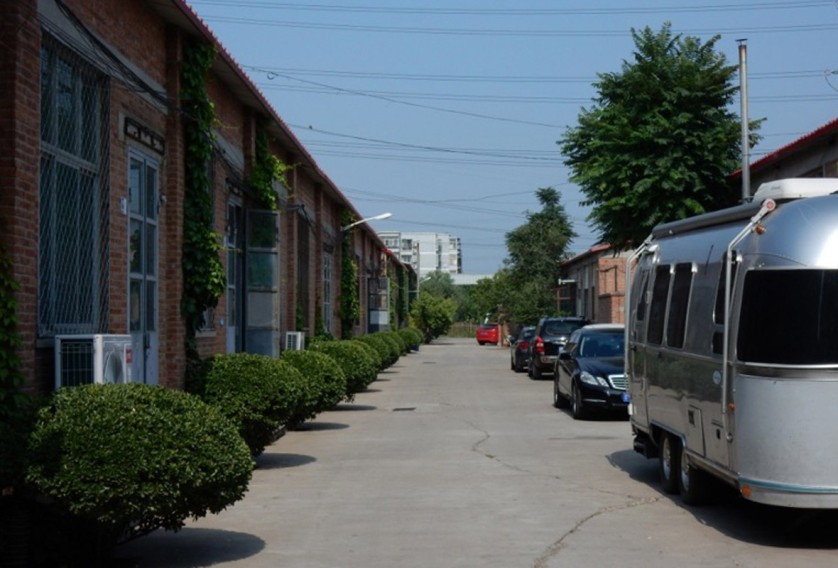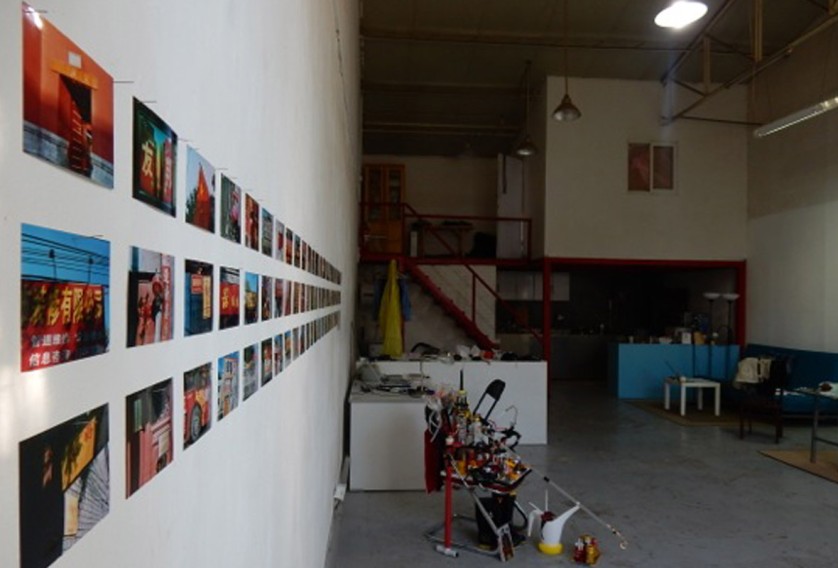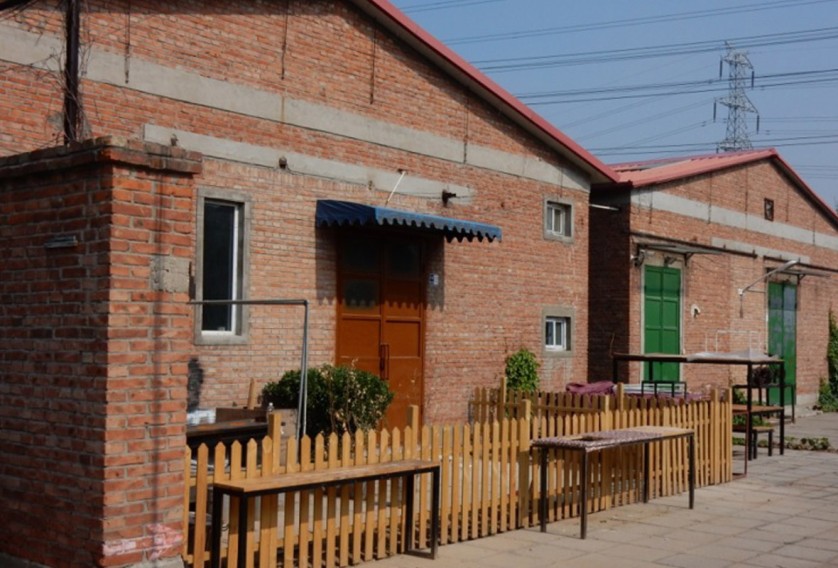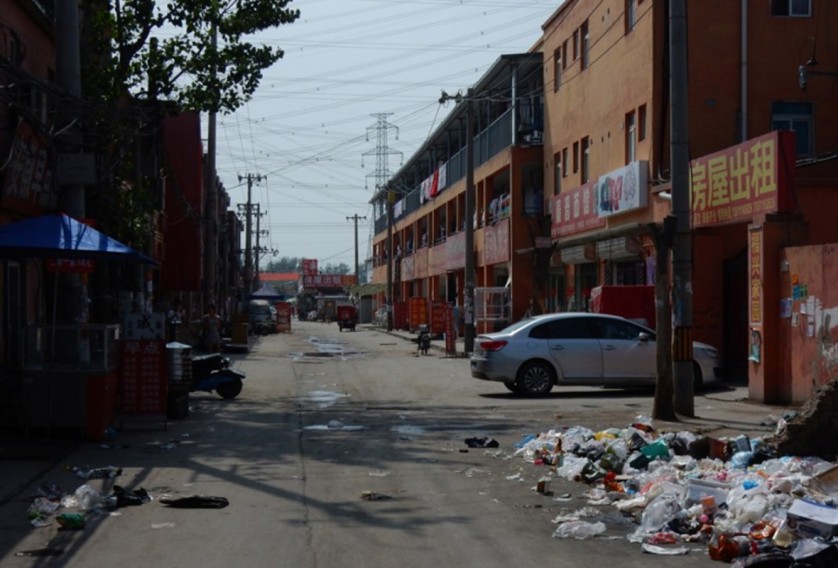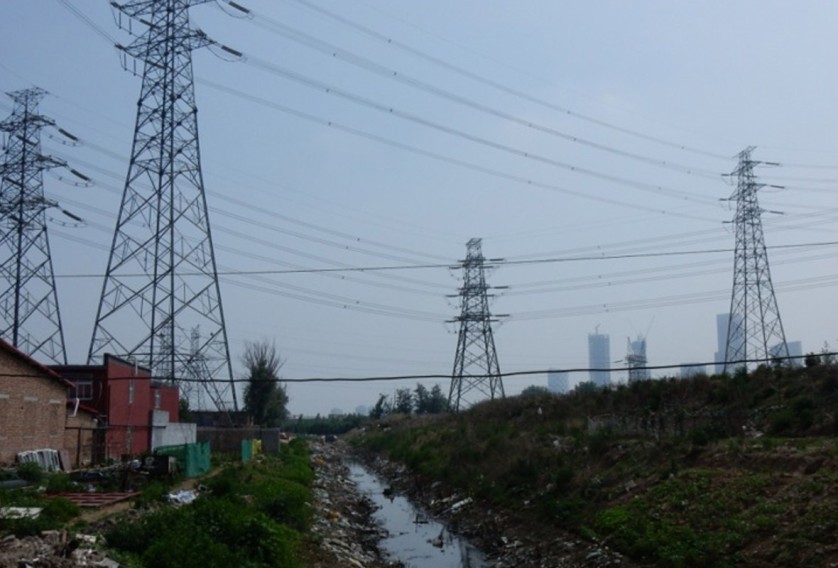Georg Salner
At the atelier, three temporary, I developed partly processual installations that connected me with Beijing/China in different ways: one with industrial materials in line with the principle of my collecting-constructive idea of the E/O/S tableau that developed over many years; a chair variant – ‘Peking Throne’ – an obvious theme related to modern China; furthermore, an intervention with older and natural materials with references to Mao that related to old China with all its historic ballast – ‘Long Hammer’ (…the long march to become the workbench of the world); and the small analogue photo installation ‘Beijing – red & yellow’ whose 72pictures were already taken in Beijing in 2005 and which I wanted to embed in the studio as a docking point providing a link to my previous stay in Beijing. During an open studio day and at the general presentation of the residents’ position I put my interventions and my artistic positions to the discussion by means of photos and catalogue pictures.
During my stay in Beijing, I visited galleries and museums time and again and also had interesting talks with gallerists and curators but, above all, I explored in detail the most recent architecture of Beijing with its spectacular new buildings in line with my plans. In 2005 when I came from Pakistan to spend two weeks in Beijing, all that did not exist as yet, but some projects were already under construction. I did not have any idea of what would be built and where and, as a result, was surprised and impressed. As is well known, the Olympic Games 2008 brought about an enormous building boom and, with the expansion of the underground system, a major improvement of the infrastructure. One of the consequences is a better connection between the atelier area located close to the Beijing International Airport and the city. In its turn, the airport now also has a good link to the urban underground via the Airport Express train.
This research is of special interest to me since the People’s Republic of China has been uninfluenced by modern architectural trends for a very long time – in contrast to prospering and inventive Japan which is successfully integrated into the world economy and which I visited to allow for a multidimensional comparison during my residency.
In China itself, the construction of spectacular new buildings started in Shanghai, while other cities, in particular, Beijing, only followed later on. The special administrative region of Hong Kong, of course, has long been a leader in the demonstration of power and wealth. Chinese decision-makers – official and private ones, aware of their power and ready to demonstrate it (statesmen-like) – couldn’t or didn’t want to do anything less than to catch up with the global modern high-rise architecture in the capital, relatively close to the historic centre, and above all, allow the construction of new iconic buildings like the Olympic Stadium, the CCTV building and the National Theatre to express a new self-confidence. The importance that the Olympic Games had as a prestigious project is reflected by the fact that the Olympic area was positioned in the north, exactly continuing the axis of the Forbidden City, i.e. along the old imperial ritual axis where the mausoleum of demigod Mao Zedong is located as well (by the way, at present it is cordoned off in line with the rigid high-security measures introduced at Tiananmen Square). It affords a seemingly endless perspective view to the south. Thus, the axes of the compass points are still of enormous importance in modern Beijing and therefore provide for historic continuity since the city’s foundation.
With regard to the multitude of buildings in Beijing, the city still has a very old-fashioned character. It is only exciting in the few remaining hutongs with their grey alleys some of which have been prettified by completely covering their surface with grey pavers and thereby upgrading them in a Chinese sense, but which do not correspond to the original (family) residential model anymore due to the Revolution. Beijing has post-modern high-rises with a local Chinese colour, Soviet-‘inspired’ prefab buildings and a high measure of historic ‘dead freight’ especially from the times after the communists came to power since politics mainly meant and still means Beijing. I just mention the National Museum and the Great Hall of the People that give a strange historicising and fascistic impression. Thus, the contemporary architectural interventions made in Beijing are special and extremely artificial in their stylistic radicalism because of the time lag. There are voices saying that all the new buildings are un-Chinese and unsuitable for Beijing, which is also true in a sense. Nevertheless, the new National Theatre next to the Great Hall of the People has to be considered a brilliant accomplishment, but the high-rises in particular give a strong impression of being foreign objects. Their common feature is that almost all of them were commissioned to the top league of international firms. An especially illustrative example is Zaha Hadid’s Galaxy SOHO built on the edge of an intact but now much smaller hutong neighbourhood. The example of the fashionable suburb Wangjing – ennobled by Zaha Hadid, too – not far from the studio compound also shows how a shiny high-rise agglomeration invades the city along motorways whereas a special variety of the Third World exists on its outskirts. Wangjing also is the part of Beijing where Daimler, Motorola, IKEA, Sony and Siemens are based. All that can be documented together with the waste dumps, completely filthy open sewers and unused wasteland – from the side of the Third-World small town Feijiacun where the studio is located. At a typically local level, this characterises the inconsistent and hypertrophic modernisation of China that has been successful neither at a political and social level nor with regard to the environment up to now and in the long term. Genuinely Chinese and frequently more subtle high-quality architecture has also existed for quite some, I just mention the Pritzker Prize winner Wang Shu (2012).
In contrast to previous artistic documentations of architecture based on the media of colour slides or in black and white, I approached this project with a digital camera and the best lens available to me and focused on six buildings and their neighbourhoods to ‘dissect’ them in small slices and sections – with the potential to re-construct them as new ‘picture buildings’.
| 1. | Dos & don'ts in this place: |
| Everyone has to find that out himself/herself as China has its own rules. | |
| 2. | Where to buy great supplies: |
| Unfortunately I have no idea, I did not buy anything important, it is easy to get tips on site, info is available in the documentation prepared. | |
| 3. | Concerning art at this destination: |
| Didn’t really blow me away. For much of it we have better variants, with a few exceptions (Ullens Center, Long March Space, White Space - Caochangdi, Red Brick Art Museum). A lot of spectacular architecture – old and new! | |
| 4. | Around the studio – where I shop, drink my coffe and get the best lunch deal in walking distance: |
| An experience that everyone has to make for himself/herself: tips are provided in the documentation in the studio and can be easily obtained from colleagues in the programme. | |
| 5. | Where I like to spend the evening (dinner, drinks and best sound): |
| Get tips on site: there are plenty of people who you can ask. | |
| 6. | What would have been useful to know before coming here and starting my residency: |
| The exact location of the atelier... |
Website resident: georgsalner.net

